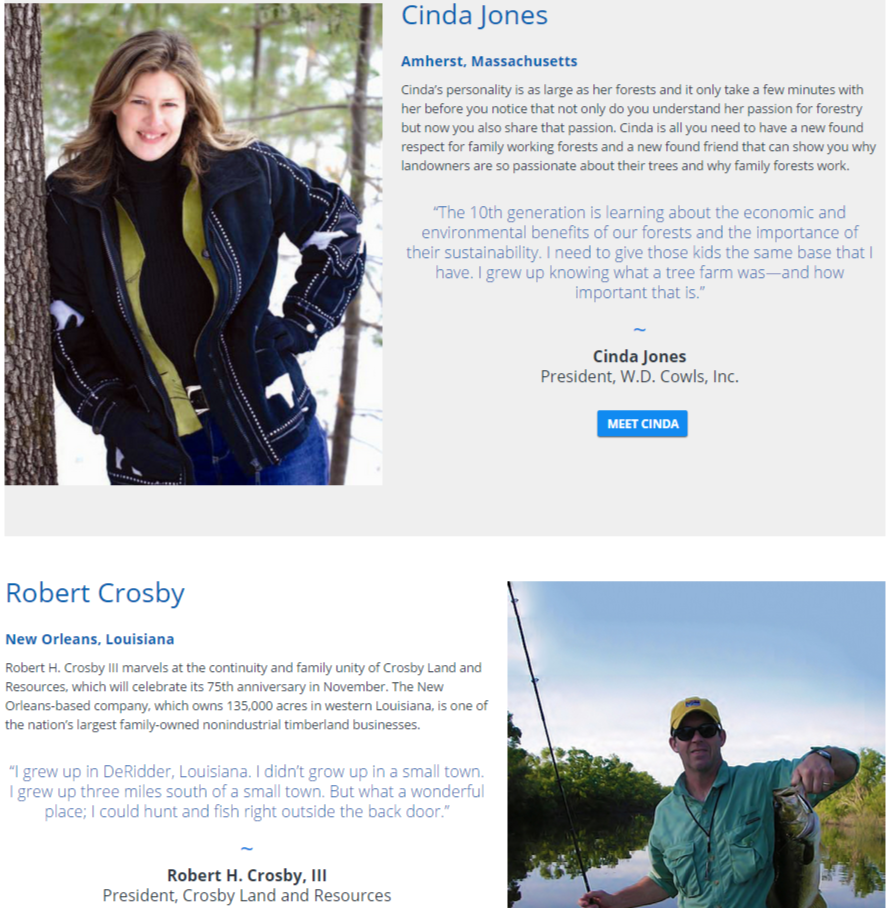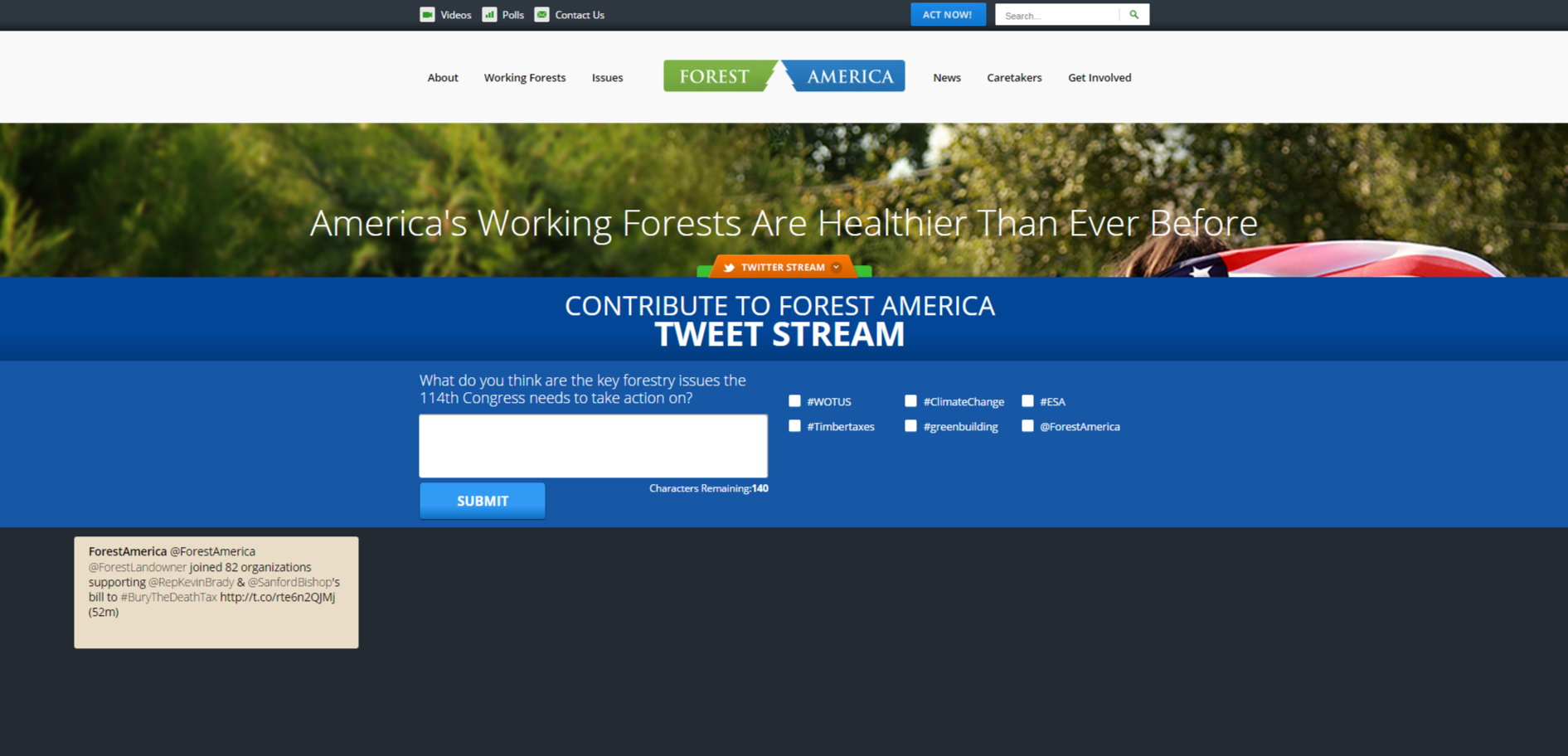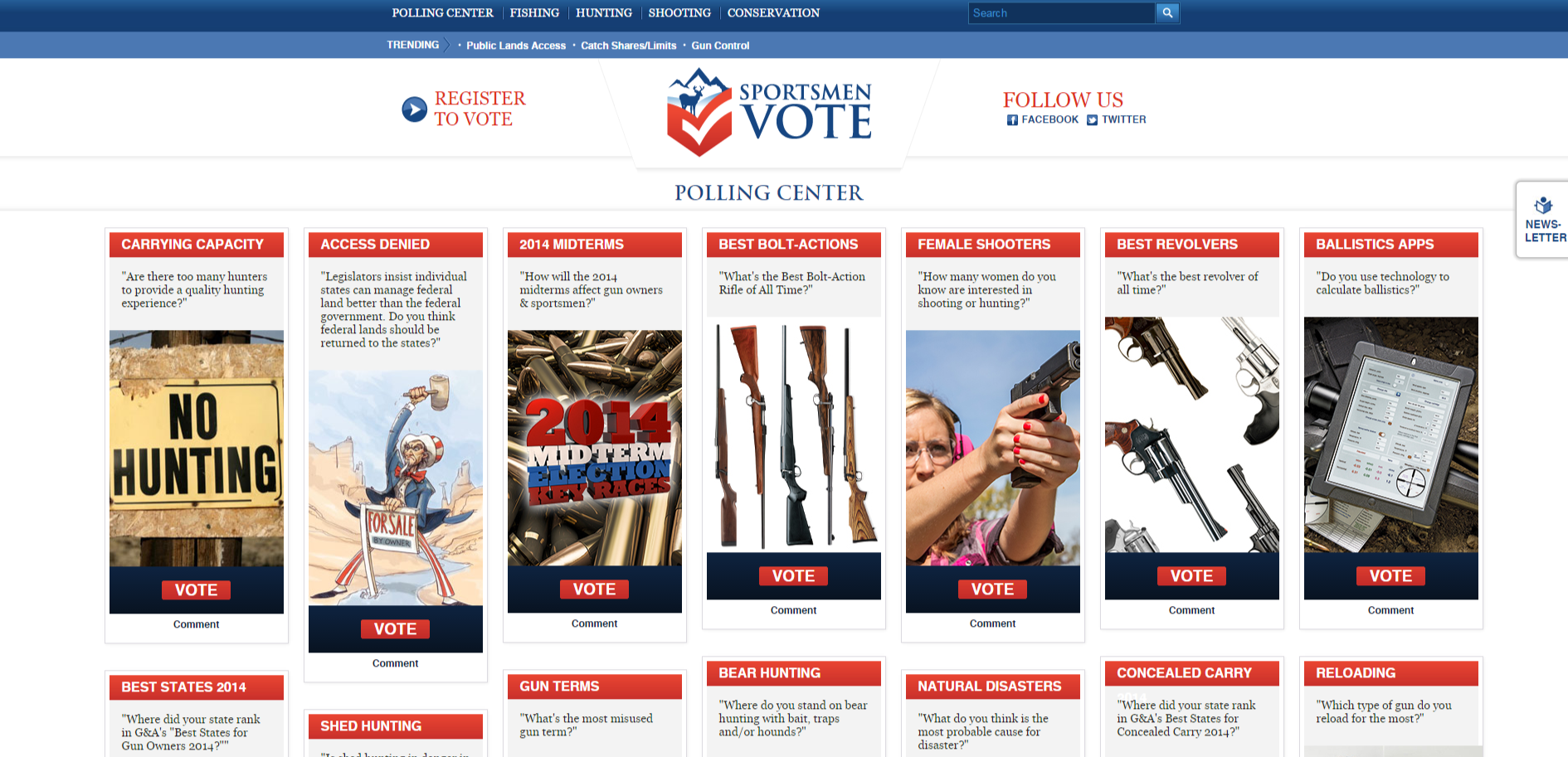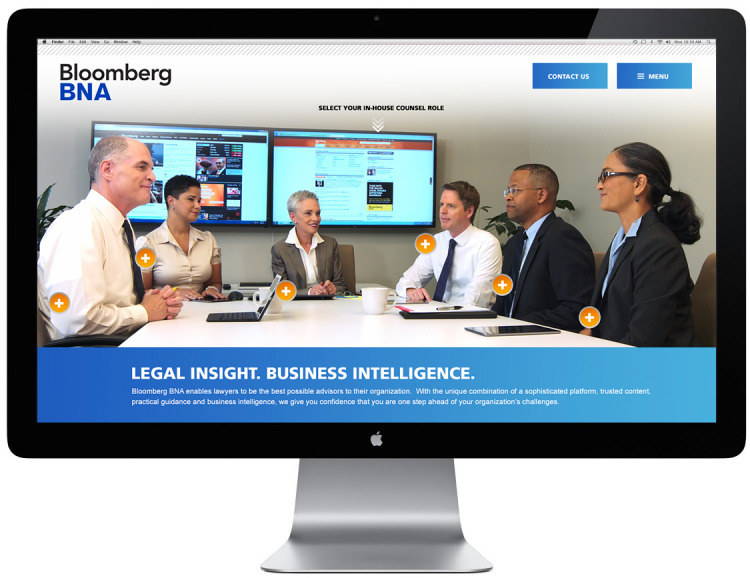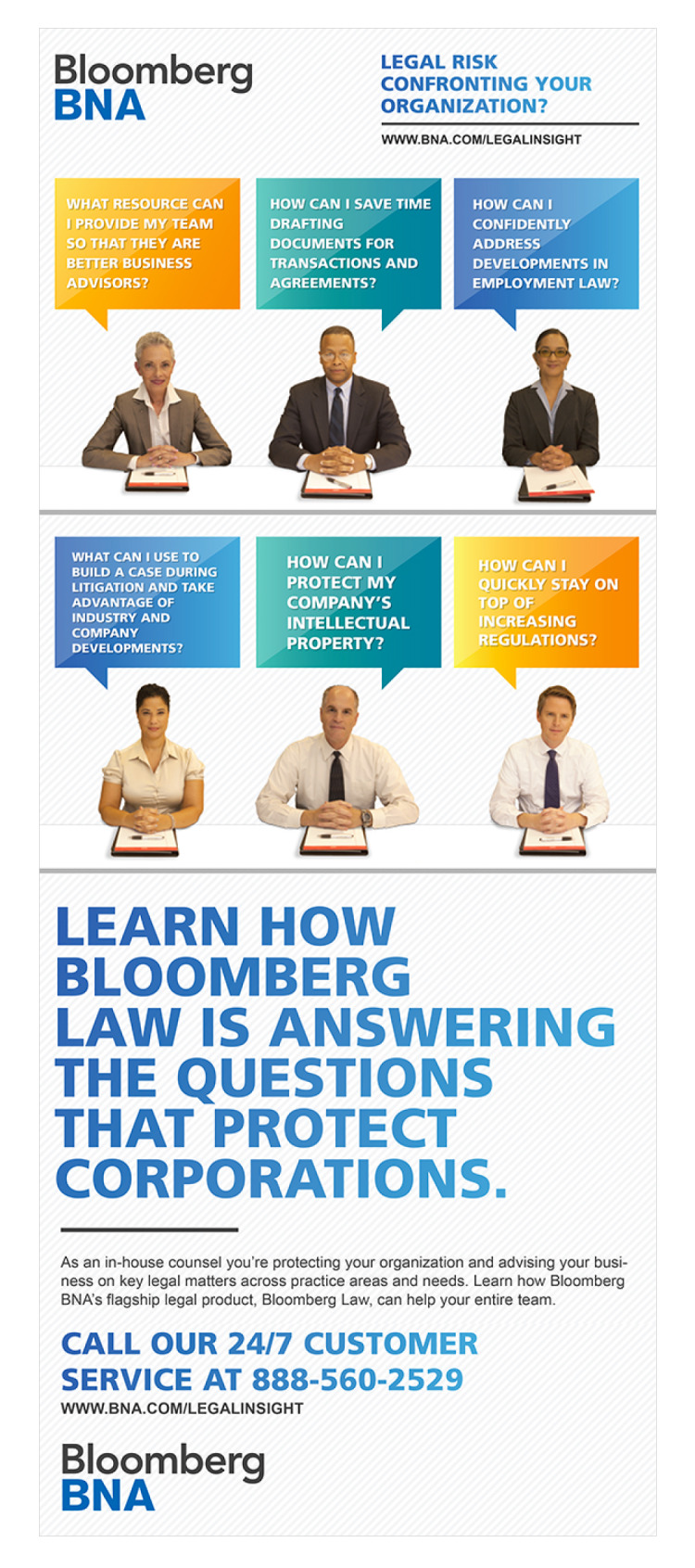Force 3 is one of the fastest growing network security services and solutions company servicing the Federal Government with revenues of more than one billion dollars annually. When it’s brand, messaging and website needed an update it turned to Bluetext. We added a fresh set of colors and a new design with the sensation of motion to the logo, a theme that plays out across the website. We also created an animated introduction that uses the color palette to draw the visitor into the site.
The new website is infused with search engine optimization so that Force 3 comes up when customers are searching for network security solutions. One of the company’s key differentiators is the expertise and passion of its team of experts. That message is persistent across the site.
The imagery is clean and modern on each page.The new brand design plays out not only on the website, but in collateral, iconography, and a new trade show booth. It delivers a brand that is in tune with today’s government customer and differentiates their offering and value from competitors.
When it was announced that Reston-based Maximus Inc. signed a definitive agreement to buy Acentia for $300 million, I must admit I got a little teary eyed.
Acentia (formerly called ITSolutions) selected Bluetext following a very competitive search to do a full rebranding effort, from name to logo to corporate identity to messaging to website to videos to launch, etc.
Todd’s challenge was hefty – he had to unify a brand across nine diverse companies (not an uncommon issue in Federal Contracting) to create a brand that would enable his company to be acquisitive and get in the game as a mid-size contractor.
This was one of our first major rebranding assignments since founding Bluetext and turned out to be an incredible project for us, working with Todd Stottlemyer and his entire management team.
If you have ever had a chance to work with Todd, his passion and commitment to excellence are second to none, and he pushed us to create work which we are still proud of today.
We spent weeks developing a name and message that not only was powerful but truly reflected the focus on his people. When the tagline was selected, Essential to the Mission, it became a rallying cry that pulled together employees, created a sense of purpose for the company and its brand, and became the theme for the company’s first advertising campaign we developed which highlighted historic people like Jackie Robinson and Clara Barton who were essential to their mission.
As my partner Jason Siegel pointed out to me last night, this is first company we named as Bluetext that is now off the market. It is a great feeling for our entire team knowing that our efforts helped them achieve their goals. Here is a link to a testimonial from Todd following the successful rebrand effort – http://bluetext.com/acentia-ceo-todd-stottlemyer-on-bluetext/
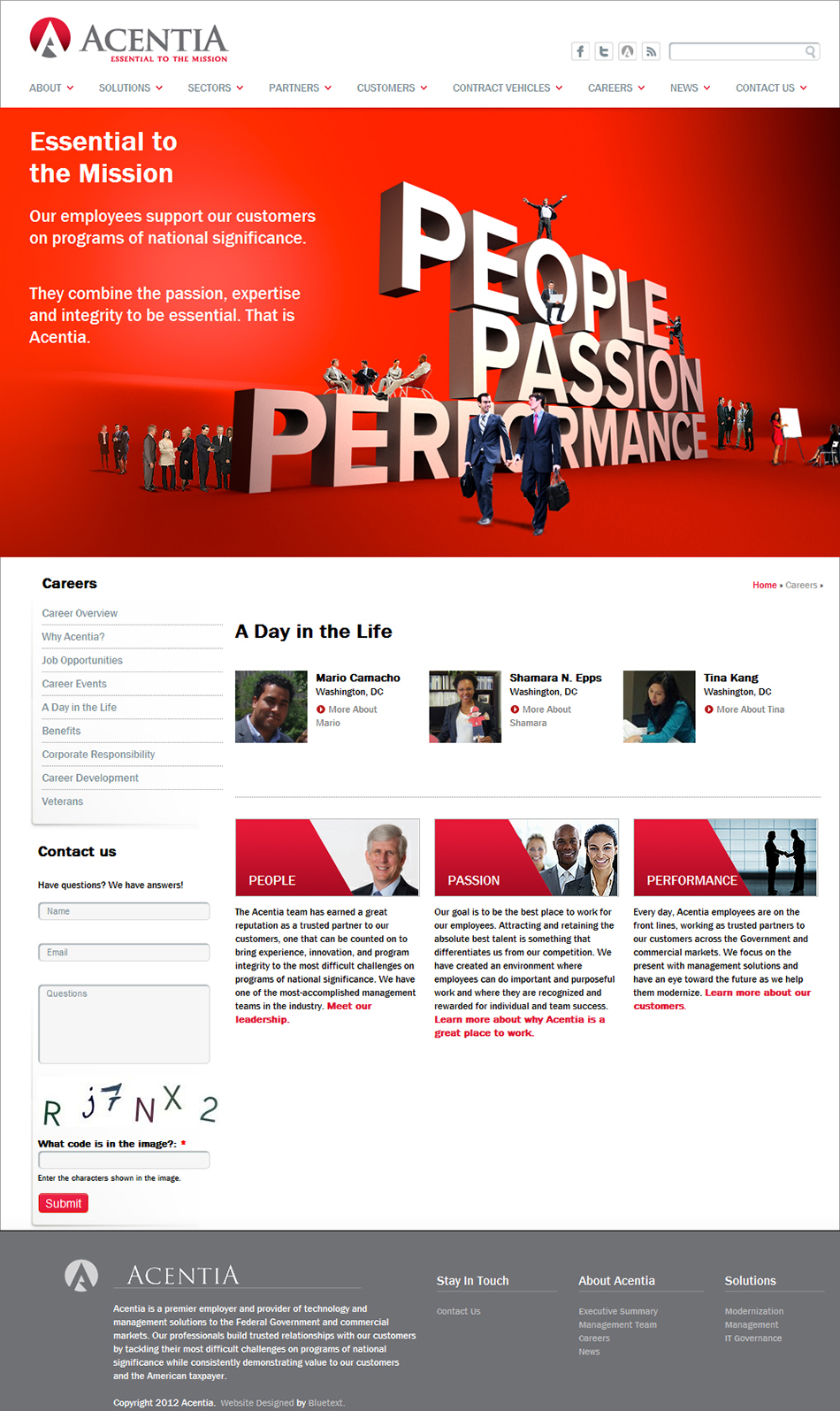
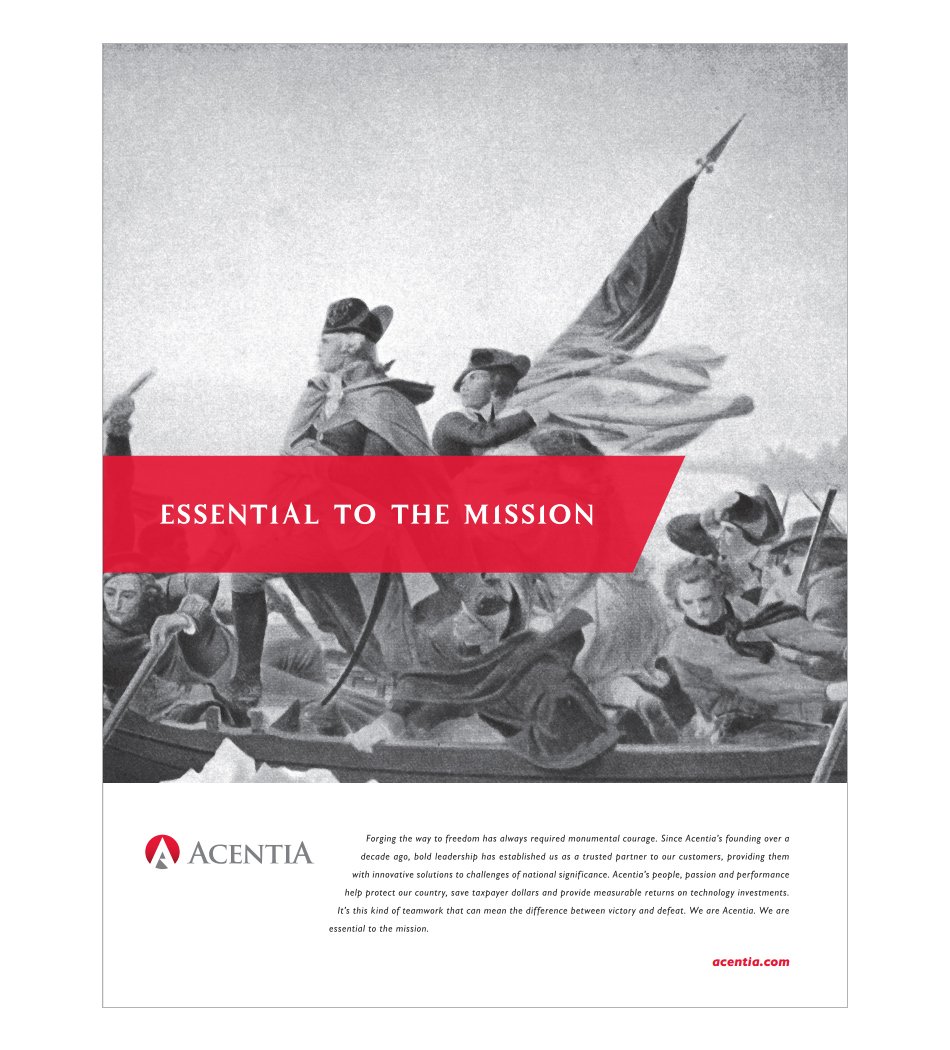
Trade associations that represent the interests of and provide services for their members, be they large companies and organizations or individuals, all face the challenge of retaining their current members every year, growing their member base and reaching non-members who may be involved in the policy or business arenas. Competition among associations is fierce. Even without competitive pressures, it’s not always easy to convince individuals, organizations, small business or large corporations to devote resources and pay fees to an industry association year-after-year. They not only have to see the value, they need to feel part of the group and believe that it is looking out for their interests and providing them the services they want.
With industry associations as with other organizations, the website is the hub of activity for members and others who want to know about the group and its issues. Too often, the hub is ignored because it’s not viewed as central to the mission of the group. We think a strong website is essential, because that is the first place that any target audience is going to look for information. Bluetext has helped dozens of industry and membership organizations leverage their web presence to better recruit and retain their members, grow their revenues and maintain a close relationship with their constituents. Here are our top five tips:
Make It Engaging. Compelling website design and graphics are extremely important to reach those key audiences and to keep them interacting with the site. First impressions are important, and if the design doesn’t resonate, the visitor may leave quickly without engaging. A tired or out-of-date design signals that the association may not have the resources or digital savvy to have a modern and fresh look and feel. The design should also allow the visitor to find a wide range of information that spans their interests. Visitors come to association sites not to purchase a specific product, but to learn about a variety of topics, policy issues, and services that are relevant to them. Burying that information under layers of tabs may lose the target audience. A responsive design is a must, as more and more individuals are accessing the sites through mobile and tablet devices. We also recommend longer scrolls as visitors swipe to navigate the screen, rather than waiting for a new page to refresh as they move about the site.
Make It Personal. This should be fairly obvious, but it is surprising how many membership organizations and trade groups fail to highlight their own members. Why is this important? Because individuals need to be able to relate to the other people in the organization, to understand the types of people who are also part of the group and what value they get from their dues. Not only does this draw in new members, but it also serves to “humanize” the organization by putting faces and stories on what otherwise might seem like a faceless group.
We recommend setting up a section on the website that is full of videos and scrapbook-type photos of members and their families. For Forest America, which represents the nation’s private forest owners, we set up a section called “Caretakers” on its website, with profiles of dozens of landowners and their families who are part of the organization. To capture the footage, we take a video crew to their annual meetings and film them during breaks telling their stories—with other family members at their side. We add in photos that they send us and any other materials that help tell a personal story. The Caretakers section serves three important functions:
1) It shows visitors to the site, including policymakers and other organizations, the human faces that comprise the organization;
2) It helps with recruitment, as other private forest landowners see that they can be part of the team; and
3) It energizes current members, who love to see their colleagues and friends—and their own families—in a scrapbook setting.
Give Them The Tools They Need. Members are busy, so any shortcuts that make their lives easier are welcome. For the Society of Human Resource Management, a membership organization that includes thousands of human resources executives, retention was suffering due to the economic downturn. HR directors needed an easy way to convince their CEOs that membership in SHRM paid valuable dividends in training and resources for their annual fees. Rather than their typical request for approval, which might be shuffled to the bottom of the in-box, we built a tool for members that with just a little bit of information would create a compelling brief presentation to be send to their top executives. The deck, which explains the value of joining or renewing their membership, was far more likely to get the attention and approval of the boss. After launching the new tool, SHRM saw its renewals increase dramatically.
Make It Easy. Not only do members appreciate better tools, they need easy ways to take action and interact with the organization. Having persistent Calls-To-Action across every page of the site is essential to get the type of engagement that demonstrates value for the organization. In some cases, those Calls-To-Action can be as simple as “Join Now.” But for advocacy sites, having a sophisticated application built-in that can send a tailored email or letter to a Member of Congress or a regulatory agency serves many purposes.
First and foremost, individuals will contact policymakers only if it’s a relatively simple process. Most do not have the time to write a note to their Congressmen, nor do they know the issues well-enough. In addition, they might have no idea how to find the right policy-maker and obtain their email or physical address. We have installed a number of effective applications for associations that take the burden off of the member. By filling out, for example, their zip code, these tools can auto-populate a letter with the correct Member of Congress and address, and offer a “Mad Lib” draft where certain fields can easily be completed.
Build In Engagement. There are excellent new tools to engage visitors to the site. The first is obvious: Make social sharing persistent on every page and section of the site. Whenever a visitor sees anything they like—a position paper, an infographic, a video or a blog post—encourage them to push that around to their larger network.
Another tool that we have implemented in a number of sites is a Tweet-Builder—a tool that poses a topic and then invites the visit to complete a tweet, with recommended hashtags that can be included. That tweet then goes in real-time into the associations Twitter Stream.
The benefits of this tool are that it encourages the visitor to participate while helping to populate the social media arena. It also gives an incentive for that person to follow the group on social media, and to broadcast posts out to their larger community.
A third tool that we implemented is a polling functionality—that poses questions on the site in the form of polling questions, and then displays the results on that same page. Designed to resemble a Pinterest Page, polling tools invite participation and give the visitor a reason to keep coming back to the site. This is one that we built for a media company that publishes a variety of sportsmen-focused magazines.
Bloomberg BNA is one of top providers of legal information for attorneys, ranging from court decisions and legal filings to law review articles and news coverage that can affect a company or case. Bloomberg saw a huge opportunity to reach in-house counsel at companies and organizations where litigation, intellectual property, transactions and compliance are managed internally. It needed a dynamic campaign to reach those target attorneys with a good reason why they should add Bloomberg BNA tools to their arsenal.
Bluetext designed a campaign micro-site that begins with a live-action video with six individual personas, representing six use cases, so that target visitors could select the example that most closely matches their own responsibilities. Once the individual is selected, the visitor is taken to a page that provides in-depth details about that particular offering including examples and screen shots.
The site serves as its own segmentation filter, placing targets more directly into the best lead nurture channel. Calls-To-Action are prominent across every page to make it simple to download a whitepaper or infographic, sign up for a relevant newsletter, request a free trial or to learn more. The campaign included a direct mail piece with graphics and designs that match the site.
My colleagues and I at Bluetext have spent a fair amount of time developing brand and positioning strategies for dozens of new, disruptive and innovative brands…and more often than not are tasked with creating a new name for the company, the products or services they deliver, or both.
With 99.9 percent of the commonly-used words in the dictionary already taken among the close to 300 million registered domains from more than 125 million companies worldwide, how many great names could possibly be left?
We are currently in the process of branding and naming a highly disruptive technology product that is almost certain to quickly become one of the most visible B2B product brands in the US. We thought this might be a good time to define the five critical tenets of coming up with a great new name:
1. The most important aspect of a brand or product’s name is a crystallized vision statement and its supporting proof points. The name should deliver against your core objective for the business and central vision for the brand. Perhaps the most important question you need to answer is whether the brand should be company-focused or product-centric. In most cases it’s the former – but many well-known brands – like RIM’s Blackberry – have successfully incorporated a strategy that leads with the latter.
2. Before you begin the name-storming process, agree on what you want the attitude or voice of the brand to be – what emotion, feeling or idea do you want it to evoke when you see and hear it? Starbucks Chairman and CEO Howard Schultz summed it up best by saying, “A great brand raises the bar – it adds a greater sense of purpose to the experience, whether it’s the challenge to do your best in sports and fitness, or the affirmation that the cup of coffee you’re drinking really matters.”
3. Once you establish your vision, there is a set of ten key initial criteria that any name being considered must meet:
- Is it easy to remember?
- Is it easy to understand?
- Is it easy to pronounce?
- Is it easy to spell?
- Does it sound good when spoken?
- Does it look good when written?
- Is it unique?
- Is it trademarked?
- Is the domain name available?
- Are there any negative connotations with it?
4. Consider the five primary approaches to naming to determine which may best represent your central vision for the brand in a distinct and powerful way:
- Functional or Descriptive (Facebook, Instagram, UnderArmor )
- Derived from Color, Number, Shape or Word Root (Accenture, RedBull, Starbucks)
- Experiential based on Human Processes (Discover, United, Visa)
- Abstract or Evocative (Apple, Uber, Virgin)
- Invented (Google, Skype, Xfinity)
5. Quantity and Diversity Equals Quality – Naming is a matter of satisfying many competing criteria – and while we have seen cases where the first name our team comes up with ends up being the final one chosen – the chances of having a name just pop into your head that meets all of them is practically impossible. The most effective way to come up with a name is to think of lots of different ideas, carefully screen and choose, and repeat. One method that’s proven effective is having all names under consideration sorted into an A and B list and reconciling it every time a new one is introduced. It is interesting to see names held initially in high favor lose a little bit of their luster with each review, while others move up the ladder.
Once a name is chosen – it will be forever attached to the brand or product it is developed for – so continuous review is critical to ensure it will stand the test of time.
Need help with a branding or marketing challenge? Lets talk!
Clients are asking us all the time about SEO. The truth is, in the changing game of organic search, trying to keep up with Google and Bing and their sophisticated algorithms is nearly impossible. As new marketing avenues emerge, however, the concept of delivering relevant, thought leadership content will always be important to the search engines. In fact, it remains the case that the attributes of your content which the search engines find most important are whether it is relevant, authoritative, and different.
It is this term authoritative which I want to explore a little more, because driving authoritative content is no different than having an opinion and being knowledgeable about a subject, classic attributes of a traditional thought leader. You need to know your targets, know how to reach them, know what content they will care about, and know what may incite them to transact or interact with you. You need to start a conversation with them on your website and on social media channels, comment on relevant industry articles and blog posts, and generally be in the mix with advice, ideas, and opinions. The search engines are using social signals to validate the impact of users, determining if that user is trusted.
So what can you do, given potentially limited budget and limited time to focus on thought leadership and authoritative content? Here are 6 keys for developing authoritative content:
1. Be provocative. Start conversations with an opinion that enables others to challenge it.
2. Be active. Take the time to research your targets and produce a steady stream of content.
3. Be smart. You should be an authority on your topic.
4. Be timely. When something happens, be the first with insights, ideas, feedback.
5. Be yourself. Have a personality. Be known for something.
6. Walk before you run, but once you start running, run hard and stick with it….your targets will notice your commitment.
P.S – Don’t forget to optimize your meta data and keep current with a list of good keywords.
Federal agencies can be great customers because they remain some of the biggest spenders and their budgets stay fairly stable even during economic downturns. Yet sales and marketing teams used to marketing to consumer or commercial enterprise customers often find that their efforts fall flat in the government space — wasting everyone’s time in the process.
That’s because talking to the government customer can require a different approach, including the channels used to reach that audience and the messages included. Understanding those needs and preferences can help contractors and feds alike.
We recently surveyed 150 top government executives involved in the decision-making process for IT purchases, to understand directly how they get the information that helps inform their purchasing decisions. The results provide a road map for targeting this audience — and a valuable look in the mirror for agency leaders who wonder if there are better ways to gather the information they need.
READ THE FULL STORY HERE AT FCW.COM
On its 10th anniversary of connecting communicators, Capitol Communicator determined that to continue to grow and be a vibrant part of the Washington, D.C., marketing and communications community, its next 10 years would be built on a new digital strategy and complementing user experience strategy. As a central hub for news, events and information for communicators in the mid-Atlantic, Capitol Communicator wanted a more modern platform.
Capitol Communicator selected Bluetext to partner with for this complete digital overhaul. Bluetext has delivered an enterprise-level WordPress implementation with comprehensive CMS publishing technologies that are integrated to allow Capitol Communicator to get best-in-class SEO, content management and smart, modern design.
Said Paul Duning, publisher of Capitol Communicator, “After a very exhaustive review, Bluetext had the energy, creativity, digital savviness, and firepower to be our new digital partner, and they really delivered. Our community has spoken, and they all love the new site which is helping us further validate that we are taking the brand in the right direction with a new digital platform as the centerpiece.”
Capitol Communicator is dedicated to bringing together the vast spectrum of communications professionals who influence and educate the Mid-Atlantic region and the world by providing news; trends; education; and opportunities for networking, career enhancement, business exchange and showcasing great work, Capitol Communicator serves as a resource to the region’s communications community. Capitol Communicator focuses on building a community that encompasses professions that include public relations, advertising, marketing, media, creative, video, photography, printing, digital and the multitude of other professions that support this region’s multi-billion-dollar communications industry. And, Capitol Communicator is a proud supporter of many organizations that share in their mission of providing professional development to the communications community.
2014 has been a year of amazing changes in the world of marketing, where micro-targeting via social platforms is now mainstream, banner ads are becoming passe, personalized content is in, native and sponsored ads are growing in popularity, video is getting shorter, and a wide range of other evolutionary marketing trends are exploding on the scene–all designed to help companies and organizations identify and reach their customers. And guess what? The sky hasn’t fallen, at least not yet. But looking at 2014 is almost, well, old news. As fast as digital transformation has hit us this year, it will move that much faster next year. So we at Bluetext thought this would be a good time to start looking ahead to 2015. We asked a wide range of senior marketing executives–including technology leaders, information services providers, financial industry start-ups, and even top trade associations–to gaze into their crystal balls and share with us their Big Bet for 2015. We’ve compiled those below, and think you’ll find their insight provocative and challenging.
BET #1. PREDICTIVE MODELING
by NICK PANAYI of CSC Director, Global Brand & Digital Marketing
As we look forward to next year and beyond, I can tell you honestly that the “next big thing” in marketing has never been clearer to me. What I believe will separate good marketers from exceptional ones is the exploding field of predictive intelligence.
We all have abundant data now. And we all have real-time marketing dashboards that act as a high-definition rear-view mirror of our customers’ digital footprints. That’s table stakes. What gets real interesting moving forward is the ability to leverage increasingly powerful predictive modeling tools to peer into the future and optimize your marketing efforts before they even start! Predictive modeling allows you to extract maximum value from the investments you already made in your digital ecosystem and the knowledge you’ve gathered about your customers’ digital body language…..
Read more about Predictive Modeling, and what top executives from organizations such as Georgetown University, NetApp, and others think is in store for 2015 by registering below.
I had the opportunity to get up close and personal with a collection of some of the the most incredible, technology driven warfighting machines at the 2014 AUSA event at the Washington Convention Center.
The Association of the United States Army (AUSA) annual meeting and exposition once again brought high-tech wares and weapons to the nation’s capital. And In what was a sure sign of the strength of the defense community and its determination to support the warfighter – the turnout for this year’s event was the strongest I have seen in years. And with the sudden and marked increase in global threats to our national security – the air was thick with patriotism.
The three-day event brought more than 500 industry and military exhibits and more than 30,000 attendees to AUSA. The expo also included workshops and talks by top Army and Defense Department officials on the state of the U.S. military.
Bluetext is proud to honor our defense community and the role we can play to help support its vision and mission of technology, innovation and continued dominance in global warfare.

